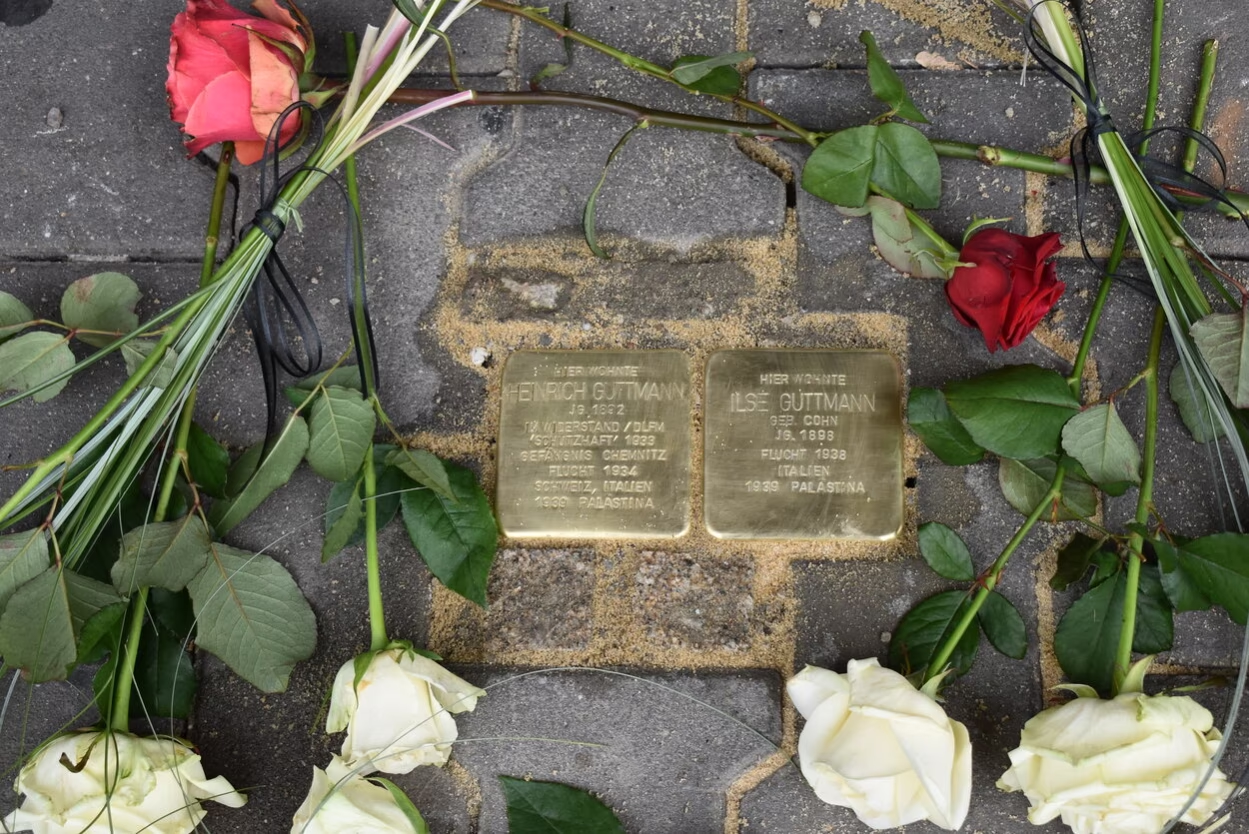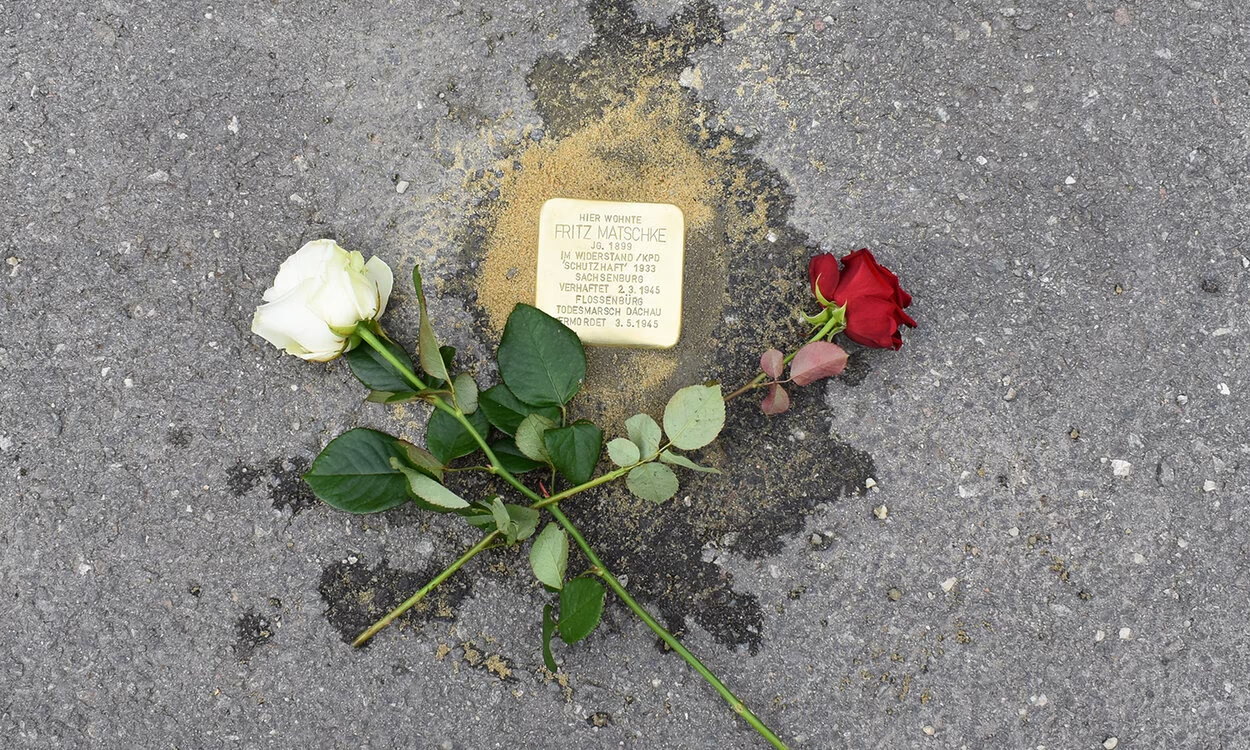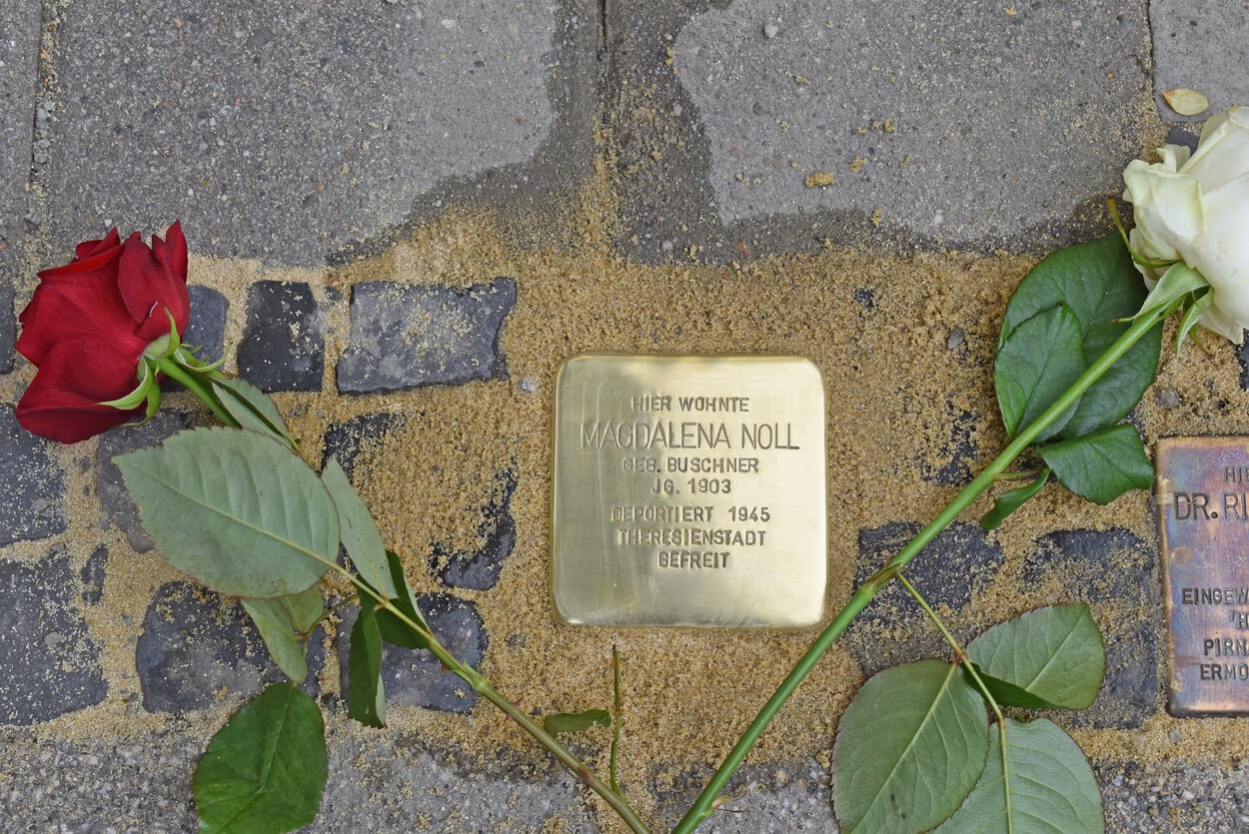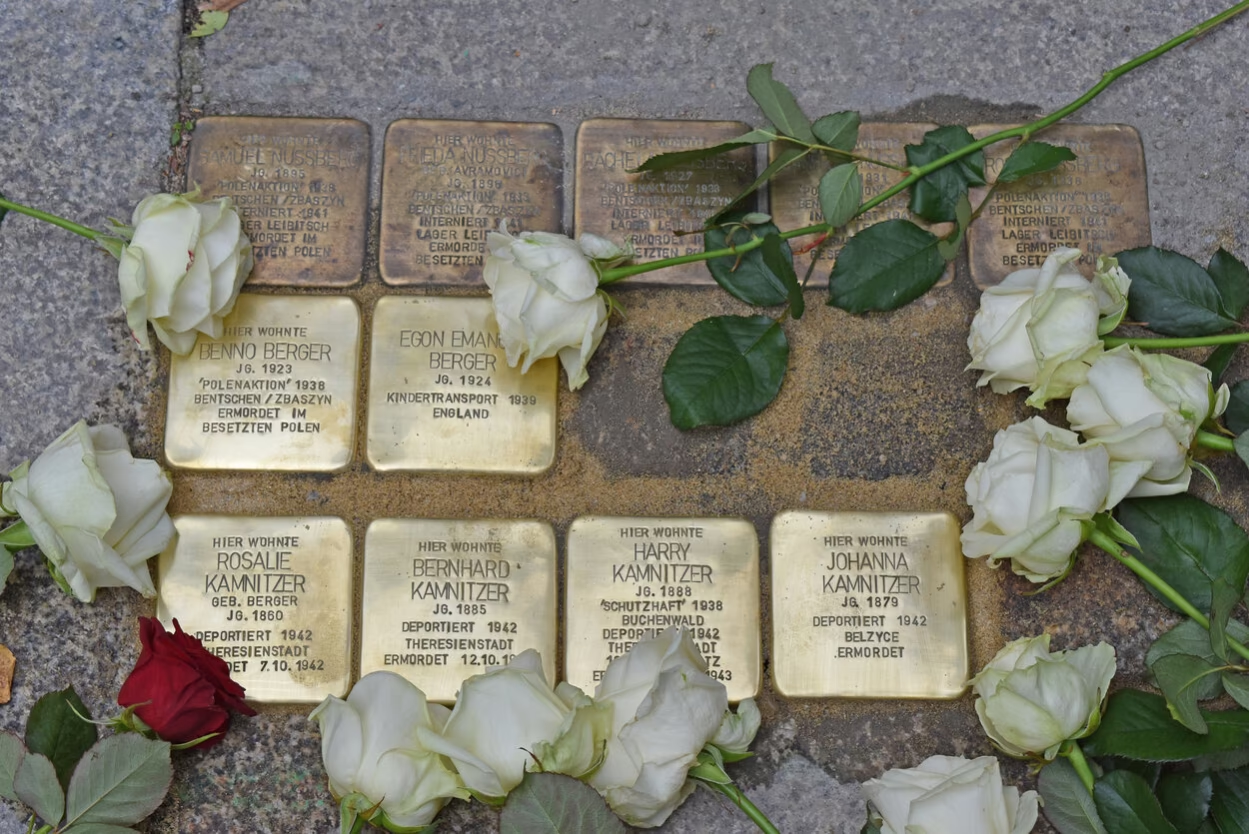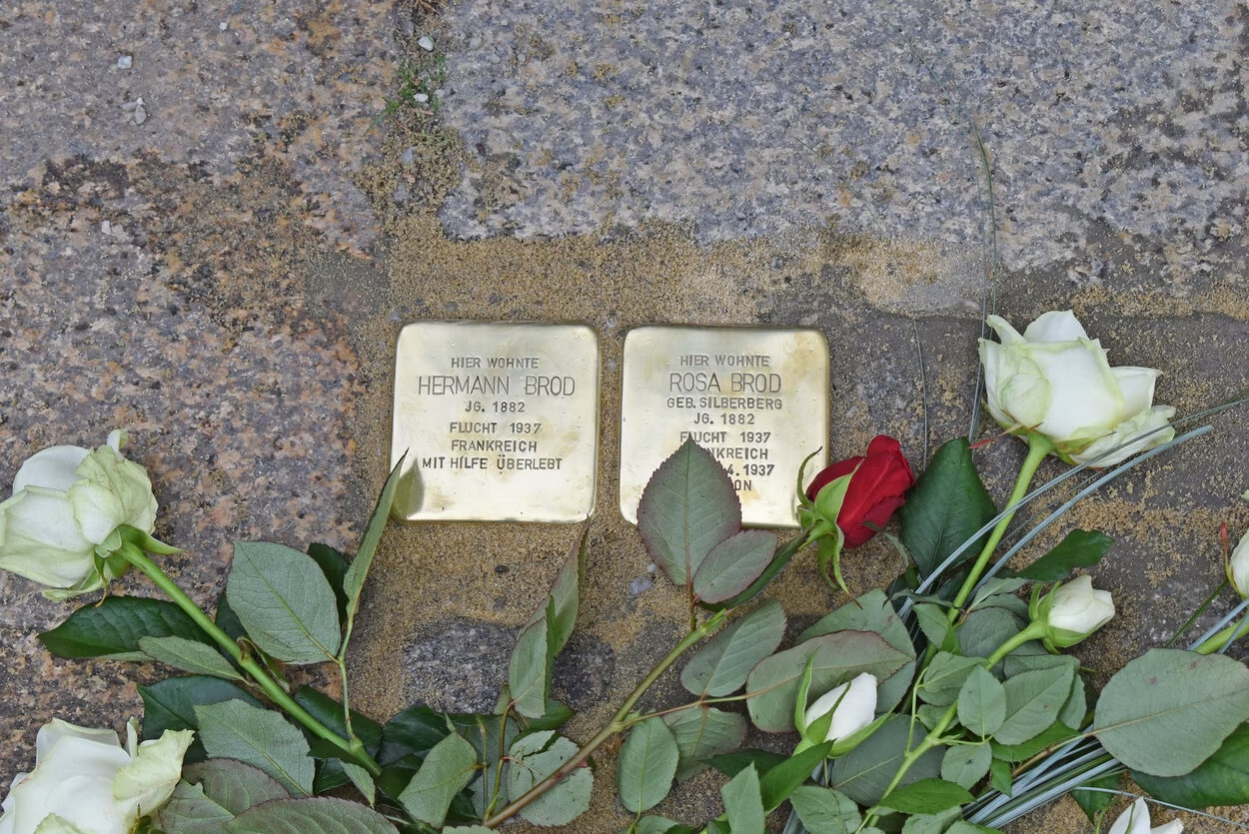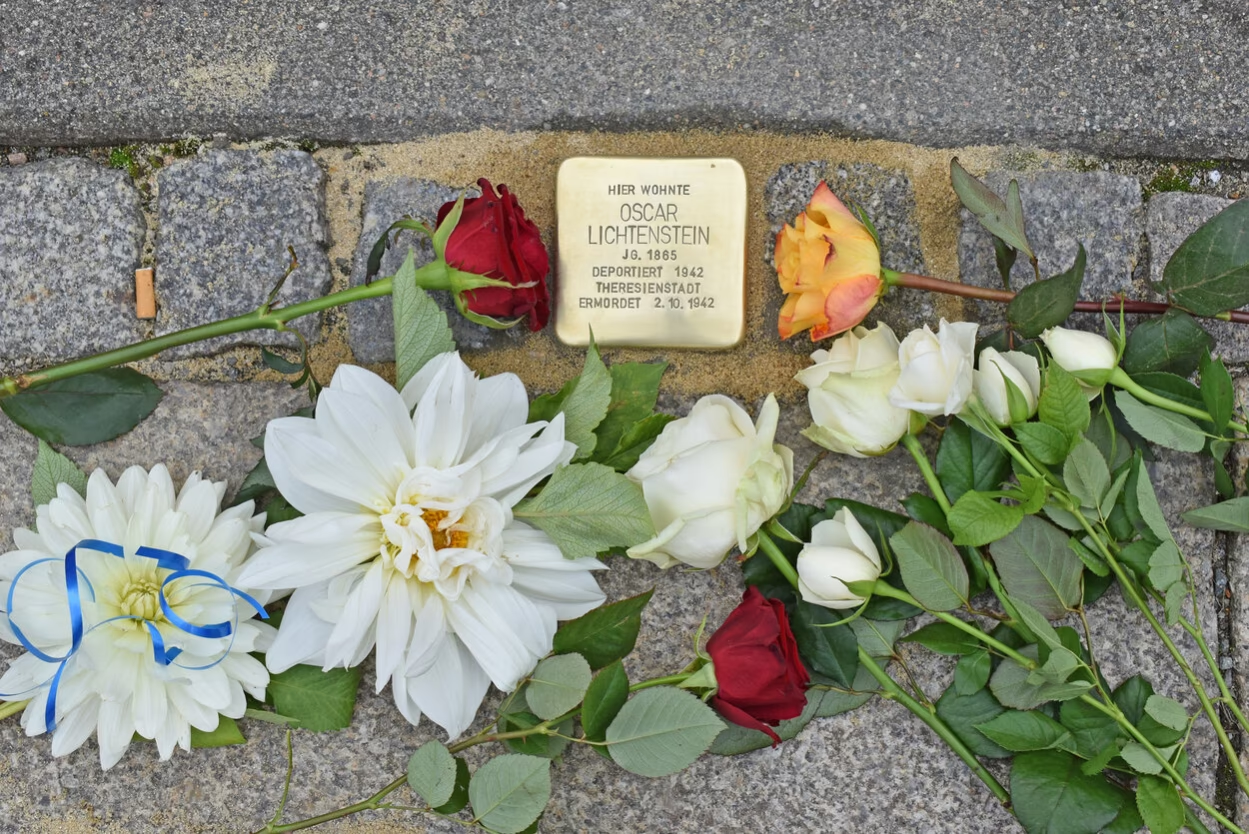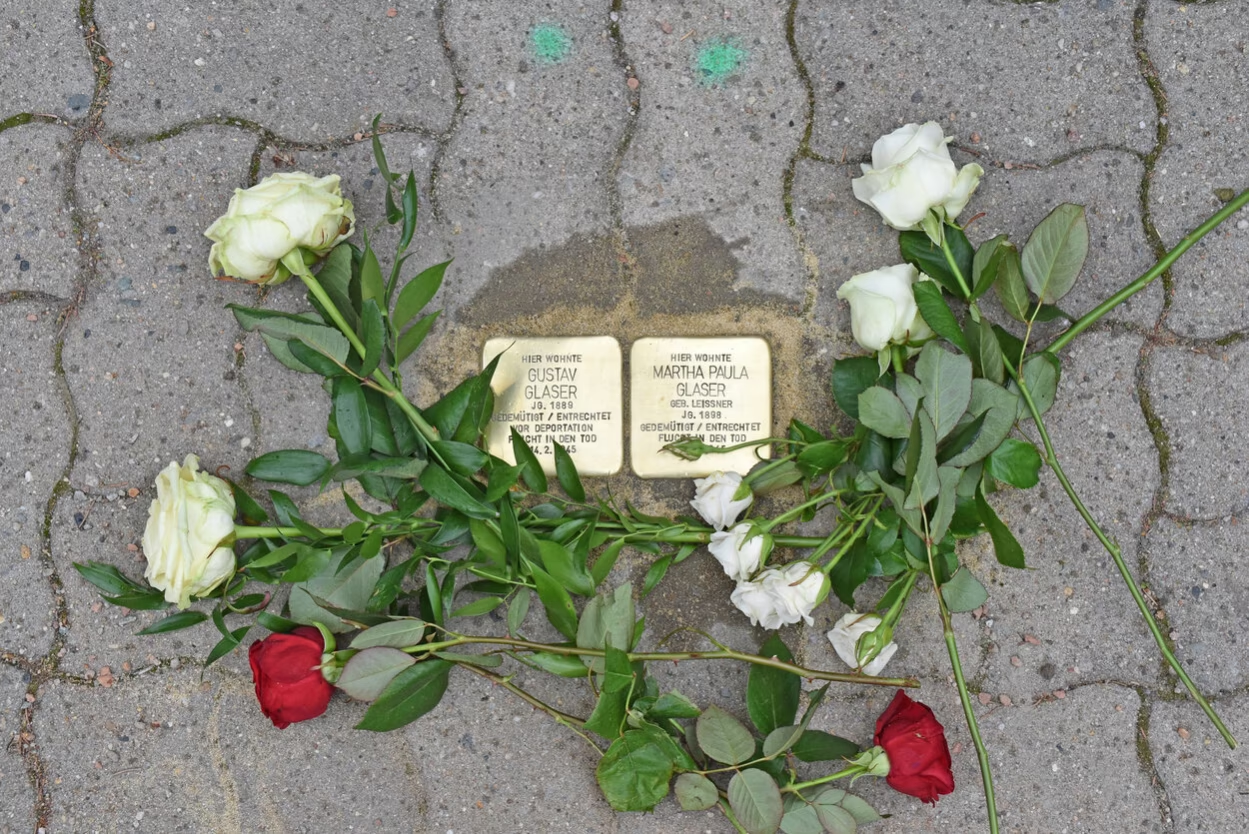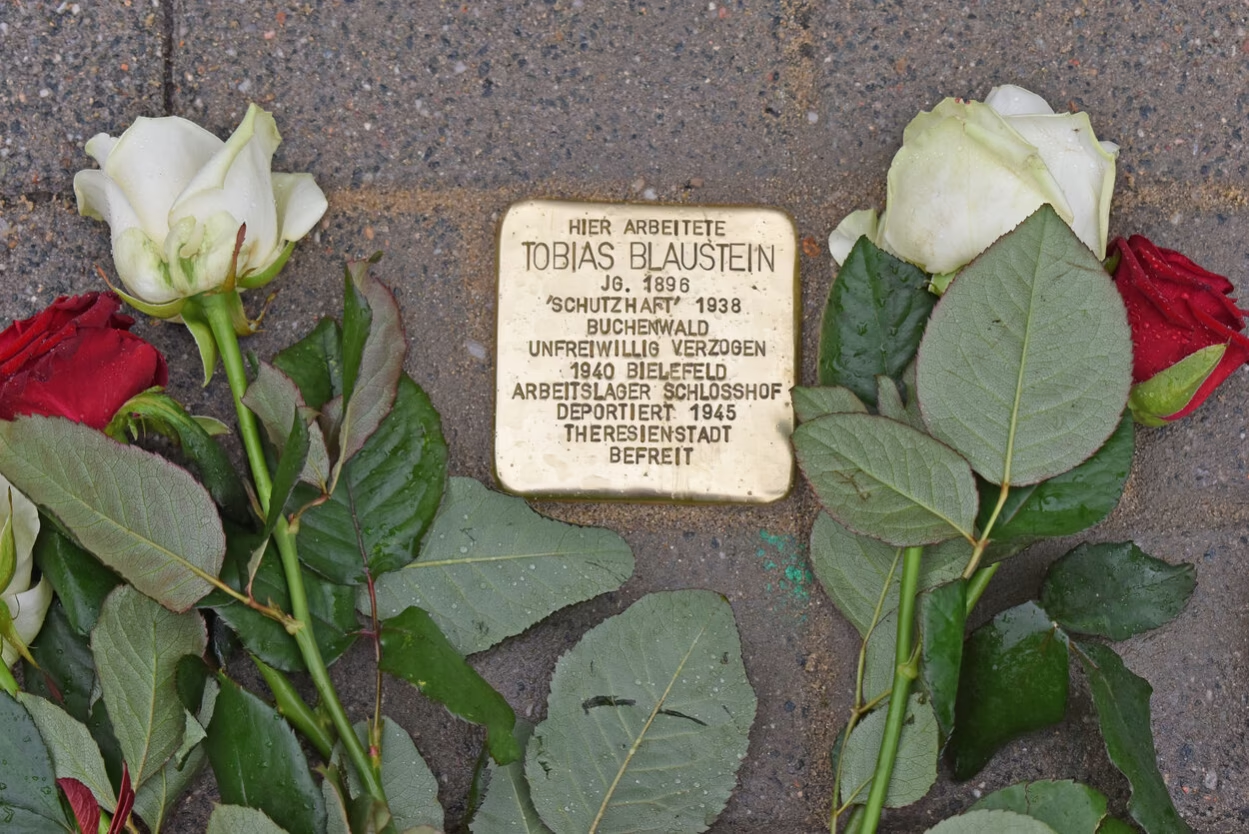Stumbling stone laying on 5 October 2020
16 new Stolpersteine were laid in Chemnitz on 5 October 2020. This brings the total number of Stolpersteine in the city to 232. For more than 27 years, Stolpersteine throughout Europe have commemorated people who were subjected to atrocities by the National Socialists.
Theatre Street 40
Stumbling stones for Heinrich Guttmann and Ilse Guttmann
The merchant Heinrich Guttmann was born on 24 November 1892. Salo Guttmann, his father, had made a name for himself in the city as the owner of a textile shop. At the beginning of 1928, Guttmann married Ilse Cohn in Breslau. In the 1920s, he became involved in the German League for Human Rights in Chemnitz. In the spring of 1933, he was taken into "protective custody" for this. The police chief advised him to leave the country. However, his son Werner was born just at this time. Guttmann emigrated to Milan in 1934. His wife and son followed him four years later. The family lived in Palestine from 1939. The couple returned to Germany (West) in 1958. Heinrich and Ilse Guttmann lived in Frankfurt (Main) until their deaths.
Godparents:
Heinrich Guttmann - pupil and teacher at the Georgius Agricola Grammar School
Ilse Guttmann - Gisela Flämig
Reichsstraße 69
Stumbling block for Fritz Matschke
The iron turner Fritz Matschke was born on 16 December 1899. He joined the KPD as early as 1919. In the midst of the global economic crisis, he joined the Revolutionary Trade Union Opposition, which had founded the KPD. On 13 November 1932, he was elected to the city council. In June 1933, Matschke was arrested for his political activities and deported to Sachsenburg concentration camp. After his return, he worked as a lathe operator at the Krautheim foundry. An illegal resistance group was formed there under his leadership. Matschke was arrested again on 2 March 1945 and sent to Flossenbürg concentration camp. From there, he was sent on the infamous death march to Dachau on 16 April 1945. Suffering from typhus, he died in the infirmary there on 3 May 1945.
Sponsor: VVN-BdA Chemnitz
Walter-Oertel-Straße 38
Stumbling stone for Magdalena Noll
The teacher Magdalena Noll was born on 26 July 1903 in Reichenbach/Vogtland. Her mother, a cashier, died of tuberculosis at an early age. Her father, a Jewish merchant, probably emigrated to Palestine at an early age. During the period of inflation, Magdalena Noll worked as a foreign language correspondent. In 1926, she married the pharmacist Hans Noll. The couple had two children: Margarete and Dieter. During the Nazi era, the family was threatened with financial ruin, as Hans Noll was no longer allowed to run a pharmacy due to his wife's background. The couple therefore divorced by mutual consent. In 1942, Hans Noll managed to lease the Lessing pharmacy in Chemnitz. During this time, Magdalena Noll was forcibly conscripted by a labour office in northern Bohemia. She was arrested at the beginning of 1945 and taken to Theresienstadt. She survived. Magdalena and Hans Noll remarried in the summer of 1945 and spent the rest of their lives in Karl-Marx-Stadt.
Godfather: Chaim Noll
Barbarossastrasse 55
Stumbling Stones for Bernhard Kamnitzer, Rosalie Kamnitzer, Harry Kamnitzer, Johanna Kamnitzer, Egon Berger, Benno Berger
The Kamnitzer family came from West Prussia. Bernhard Kamnitzer had lived in Chemnitz since autumn 1907 and worked as a travelling salesman for the Max Berger hosiery factory. In the mid-1920s, Rosalie Kamnitzer, his widowed mother, and his siblings Johanna and Harry also moved to Chemnitz. From then on, they lived on the Kaßberg. At the beginning of 1932, Bernhard Kamnitzer founded his own company, Maxonia Wirkwaren GmbH. The Nazi seizure of power meant persecution and annihilation for the family. Bernhard Kamnitzer was unable to prevent his company from being dissolved. At the beginning of 1940, he married the divorced Judith Paretzkin, who emigrated to the USA shortly afterwards. His attempt to emigrate to Palestine failed. From then on, he had to live with his 81-year-old mother and siblings in cramped conditions in the "Jews' house" at Friedrichstraße 5. From there, they were deported to the extermination camps in the East in May and September 1942.
The brothers Benno and Egon Berger had lost their mother in Leipzig in 1935. The half-orphans then lived with their aunts in Chemnitz. Benno was taken in by Mr and Mrs Nussberg, who also lived at Barbarossastrasse 55. Egon lived with Mr and Mrs Avramovici. Benno Berger and his foster family of five were deported to Poland on 28 October 1938 and later murdered in the "Generalgouvernement". Egon Berger, on the other hand, was rescued with the help of a "Kindertransport" in the summer of 1939 and lived in England until his death.
Godparents:
Rosalie Kamnitzer - Vollkasko-Massivhaus Chemnitz GmbH Town & Country licence partner
Johanna Kamnitzer - Beate Legler
Bernhard Kamnitzer - Dr Carsten Czenkusch and Marion Czenkusch
Harry Kamnitzer - Matthias Legler
Benno Berger - Martina Lange
Egon Emanuel Berger - Kerstin Hermann-Nitz
Ulmenstrasse 44
Stumbling stones for Hermann Brod and Rosa Brod
Egg wholesaler Hermann Brod came from Mariampol (now Ukraine). He lived in Leipzig with his wife Rosa, née Silberberg, until 1907. The couple had three daughters: Ida, Jenny and Ruth. Brod's grocery shop was also affected by the National Socialist boycott of Jews on 1 April 1933. The couple therefore decided to give up the business and leave the country. In autumn 1936, they emigrated to Barcelona. Ultimately, however, the couple decided to live in the south of France. However, their new start there was not under a good star. Rosa Brod died "under tragic circumstances" on 5 April 1937 in Luchon, as her husband wrote in an obituary for the "Jüdische Zeitung für Mittelsachsen". She was buried in a cemetery in Toulouse. Hermann Brod continued to live in France.
Godparents: Dr Peter Rheinbay and Barbara Rheinbay (Düsseldorf)
Rudolf-Breitscheid-Straße 5
Stumbling stone for Oscar Lichtenstein
The merchant Oscar Lichtenstein was born in Preußisch Eylau (East Prussia). He lived in Chemnitz from 1892. In 1895, he founded a fabric glove wholesale business. In August 1897, Lichtenstein married Clara Wollenberg in Posen. Their four children were born between 1900 and 1908: Agnes, Fritz, Hans and Käte. Clara Lichtenstein died on 30 April 1936 and was buried in the Jewish cemetery. Lichtenstein was subsequently forced to give up both his business and his home due to the boycott measures imposed by the Nazis. He finally lived in the "Jews' house" at Apollostrasse 18, from where the widower was deported to Theresienstadt on 7/8 September 1942. According to survivors, Oscar Lichtenstein died of starvation there on 2 October 1942.
Sponsor: Friends of the Jewish Community of Chemnitz
Copernicus Street 16
Stumbling stones for Gustav Glaser and Martha Paula Glaser
The sales representative Gustav Glaser was born on 8 March 1889 in Lindenberg near Berlin. In the 1920s, he moved to Siegmar-Schönau. In 1928, Glaser married the technical draughtswoman Martha Paula Leißner, who came from a Protestant family of factory owners. The Nazi takeover also had consequences for the couple. Glaser was no longer allowed to work as a sales representative. They had to give up their flat in Schönau and were billeted with the former factory owner H. Sussmann. At the end of 1944, they were forced to move into a "Jews' house" in the city centre. From there, Glaser was to be deported to Theresienstadt on 14 February 1945. Fearing the "uncertain future", he poisoned himself before the deportation. His wife followed him to her death.
Godparents:
Gustav Glaser - Katharina Kästel-Sasse and pupils of the Montessori School Chemnitz
Martha Paula Glasser - Silvia and Florian Ziesch
Altchemnitzer Straße 4
Stumbling block for Tobias Blaustein
The accountant Tobias Blaustein was born on 28 November 1896 in Skalat (Austrian-Poland). His parents had lived in Chemnitz since 1907. They later found a suitable flat in the house at Jakobstraße 8. This was owned by the Zweiniger family, who owned a ballroom in the neighbouring house. A lifelong friendship developed between Tobias Blaustein and Arthur Zweiniger. In the spring of 1926, Tobias Blaustein married the seamstress Elisabeth Lentzsch. The couple had three children: Eleonore, Erich and Hanna. At that time, Blaustein found a job as the first accountant at the renowned Leonhard Tietz department store. The Nazi takeover also had consequences for Blaustein's family. Blaustein was to be arrested on 28 October 1938 as part of the "Poland Action". However, Arthur Zweiniger was able to warn him. A few days later, during the November pogrom, he was taken into "protective custody" and deported to Buchenwald. After the start of the war, Blaustein was arrested again in December 1939 as a stateless person. When Zweiniger learnt of this, he lobbied the Gestapo for his release. He was released on the condition that Blaustein leave the city within a week. Thanks to Zweiniger's mediation, Blaustein was able to deport to Bielefeld in January 1940. On 20 February 1945, he was deported to Theresienstadt. He survived. Tobias Blaustein died on 28 February 1993 in a Jewish retirement home in Frankfurt (Main).
Sponsor: Katrin Zweiniger


